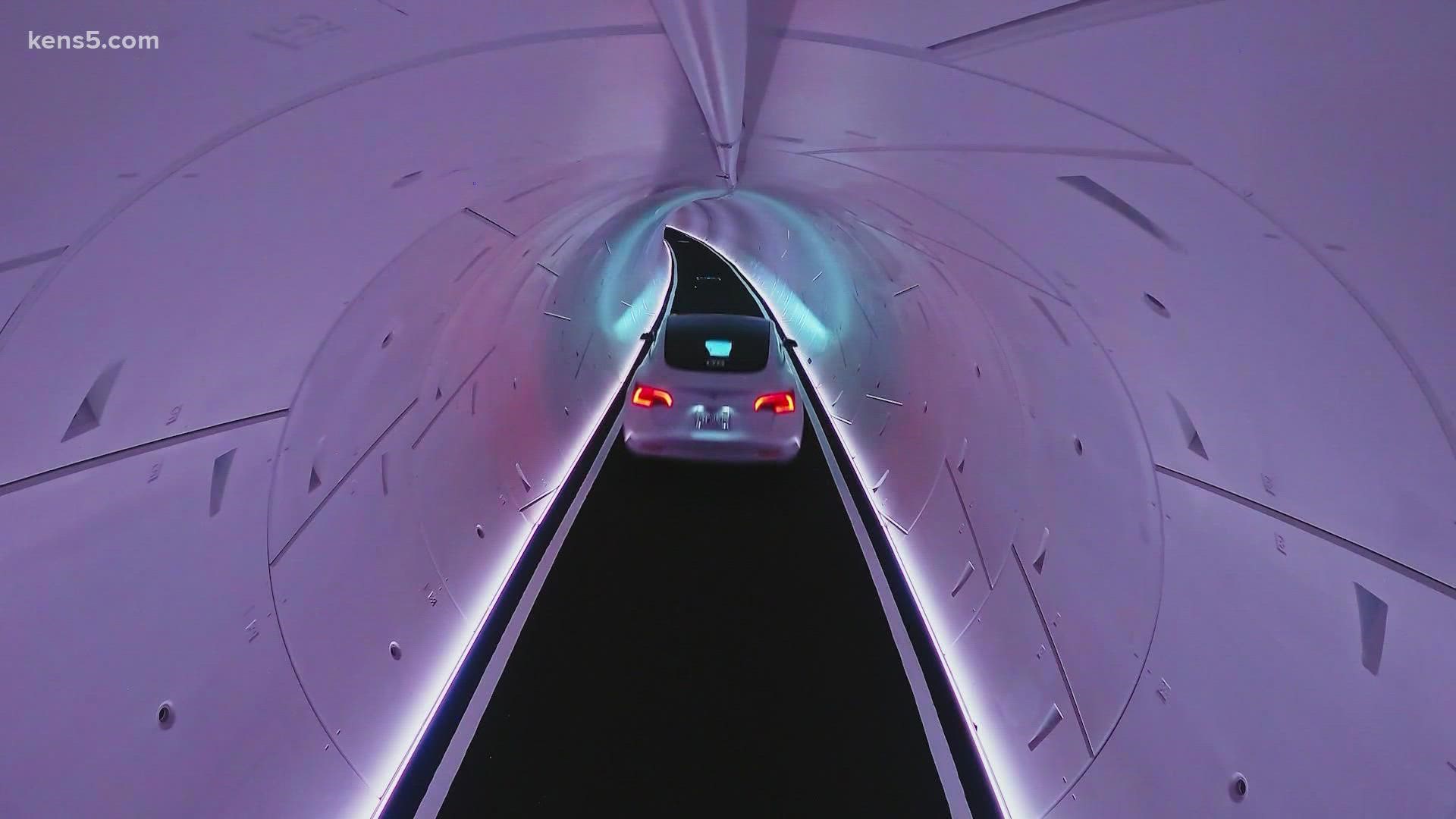SAN ANTONIO — Bexar County leaders will study whether Elon Musk's Boring Co. can drill a 9-mile tunnel where automated Teslas would ferry people between the airport and downtown.
Alamo Regional Mobility Authority (RMA) board members voted Wednesday to negotiate a project plan with the billionaire's company.
"The board has continually sought innovative ways to finance transportation projects to ensure a bright future for the community in a way that bridges technology and accelerates the delivery of needed projects," chairman Mike Lynd said in a statement.
"Today's board action is the first of many discussions," he added.
Musk's company already operates a similar underground loop in Las Vegas.
In theory, the tunnel could move cars off U.S. Highway 281 and ease congestion in San Antonio.
But project specifications are far from final and the Alamo RMA has yet to release a detailed, preliminary proposal. County leaders have only taken a first, formal step to explore the idea.
"It's a nice amenity" that's environmentally-friendly, said Bexar County commissioner Tommy Calvert, a former Alamo RMA board member.
He questioned, however, whether the tunnel would be misplaced between the airport and downtown San Antonio. Visitors often use taxi or rideshare services to make the relatively-short trip.
"From a local standpoint, where is the biggest congestion? Probably 1604 and 281 into town or 1604 and I-10 at The Rim into town," he said. "The (tunnel) beneficiary, primarily, appears to be the person who's going from the airport to the Pearl."
San Antonio resident Rita Hernandez called the idea "impressive," but said she would use the tunnel "maybe once a year."
"And that's being generous," she added.
It's not clear what incentives the Boring Co. will require to seal the deal.
Company leaders floated the idea of repaying a taxpayer-issued loan for the project with revenue its operation generates. Users would likely pay a fee to ride the shuttle, for example. The Boring Co. could also sell in-tunnel advertising.
But San Antonio taxpayers will almost certainly be financially-responsible, at least in the short-term, for a transportation mode used primarily by tourists and a smaller group of locals.
"You have to be careful about going too far down these tracks with public dollars just because maybe a special interest - maybe the people in Alamo Heights, Terrell Hills, and Olmos Park - want to have a cool way into downtown and into The Pearl," Calvert said.
"These are everybody's taxpayer dollars," he added. "The technology is fantastic... we just have to make sure it's put in the areas of greatest need."
It's possible the tunnel operation pays for itself and eventually generates revenue the Alamo RMA can use for other road projects.
In fact, the transportation board set out to make money before it set out to build a loop.
In 2019, the Alamo RMA formally solicited ideas for "new delivery methods for transportation projects, development of new revenue sources, and identification of revenue sharing arrangements that would provide the Alamo RMA increased capacity to complete additional transportation projects" from its public and private partners.
An Alamo RMA document indicates a company suggested an underground tunnel in response to this request and "the concept warranted further consideration."
The Texas legislature created regional mobility authorities in the early 2000s to facilitate local infrastructure construction. In general, RMAs finance their work with toll road proceeds.
Calvert says lawmakers really created the RMA system so elected officials wouldn't take heat for taxing road access.
"Kind of like ERCOT," Calvert smiled.
Toll roads aren't financially feasible in San Antonio, he noted, so the Alamo RMA relies heavily on vehicle registration fees to cover project costs.
The Boring Co. estimates its project would cost between $247 and $289 million. That cost could vary widely, depending on negotiations with the county.
There is no set construction date and no guarantee San Antonio leaders can reach a deal with Musk's company.

